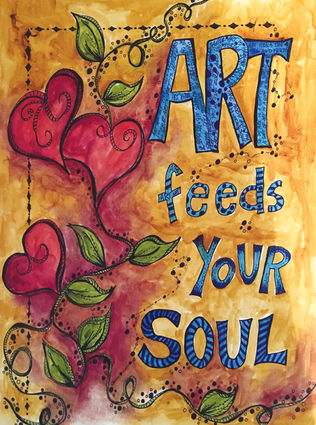The healing power of creativity
September 1, 2018
"What I dream of is an art of balance, of purity and serenity ... something like a good armchair which provides relaxation from physical fatigue." –Henri Matisse.
The painter Henri Matisse started painting late in life. He was recovering from an illness and used art as a form of therapy. Perhaps comparing art to a "good armchair" was his way of saying that creating art has healing properties. It certainly did for him. But making art isn't the only way to appreciate and glean from the power of creative expression. The armchair also needs a body. Someone to view, contemplate and engage with the finished product.
Art is a form of expression. I worked for a chiropractor once that was very particular about the art he hung in his office. He explained to me that the mood of the artist is embedded in the final outcome of his project. It has been created in a specific frame of mind and can influence mood when viewed. This doctor said he did not want a painting in his workspace that someone completed when they were angry or depressed. He wanted "happy" and "inspiring" art. Picasso said, "The purpose of art is washing away the dust of everyday life off our souls."
Whether creating, viewing, teaching, listening or even just sitting in the armchair contemplating, art in any form speaks louder than words.
How does art help you relax? Keep in mind the colors and designs that inspire and empower you. The use of color, subjects, design and even display are very important in marketing. The language of color is communicated more quickly to our brain than shapes or words because they work directly on our emotions and feelings. Even hospitals and healthcare professionals are now using art to promote tranquility in their facilities. Restaurants and fast food places understand the importance of color. Specific colors can change moods. Brighter colors inspire energy and activity, and dark colors encourage reflection. Pictures with cool colors especially those which mimic natural elements are associated with relaxing environments. Green also inspires peace and creates balance. Did you ever wonder why McDonalds is switching from red to green? There might be more to it than you think!
The subject and design of your wall art is also important. Landscapes encourage relaxation and invoke inner tranquility. Artwork with a simple, single focus is relaxing, but artwork with a lot of clutter can cause feelings of anxiety. This same concept is important in the arrangement of your art pieces. A wall with too many colors can irritate an already busy mind. Wall hangings should be in harmony with their surroundings. A simpler wall arrangement is more conducive to relaxation than image overload. The arrangement of artwork on a wall is an important part of ensuring a relaxing space.
The creative process is a part of life. Surrounding your environment with art, beautiful music, even the sound of a water fountain all help to feed the soul. And of course if you want a wonderful outlet, an art class or two or three won't hurt. Even an adult coloring book will relax and help your mind return to its center. Surround yourself with what you love. This applies to everything in your home, not just the artwork. Get rid of what you don't love. Then notice how your home or office has transformed into a joyful life-affirming space.
Judith Campanaro is an artist, art educator and art therapist. She currently teaches classes at the Treasure Trove.




